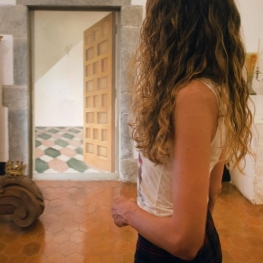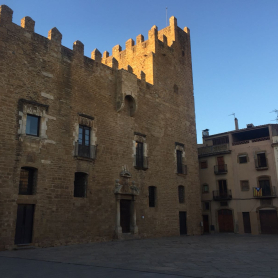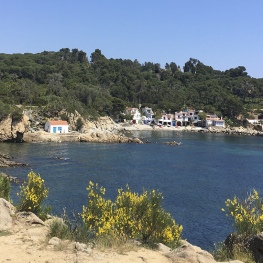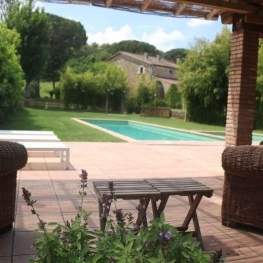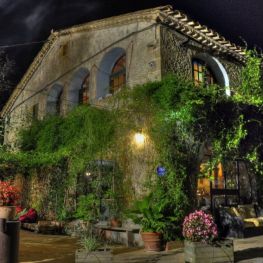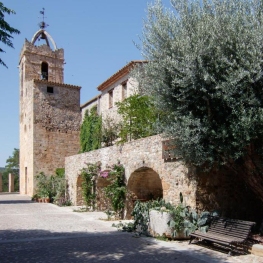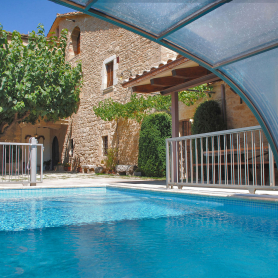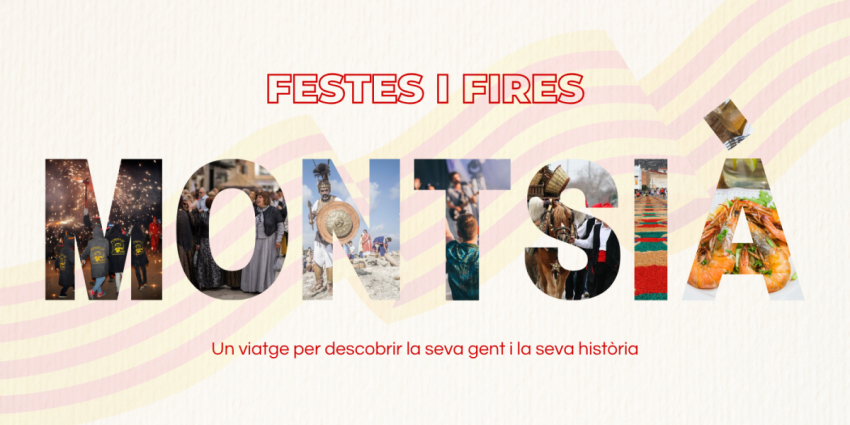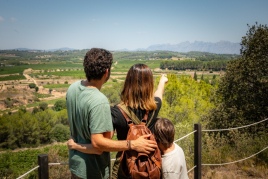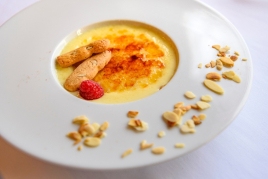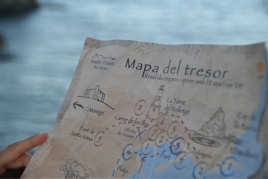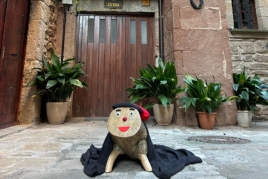Route through the republican airfield of Bordils

The Bordils Airfield is a visitable space built at the end of 1936, considered one of the most important military airfields of the Republican Army in Catalonia during the Spanish Civil War.
With an area of 126 hectares, it was built on agricultural land that belonged to the municipalities of Celrà and Bordils. The construction of the field had significant effects, since it considerably altered the agricultural activity in the area so that it occupied the best farmland, which was also the flattest, in addition to causing the abandonment of the surrounding land for fear of bombing.
The camp was operational militarily from the first quarter of 1937 to February 1939. Its main function was to monitor the coast of Girona, to defend it from attacks by both the Francoist fleet and the Italian aviation that had its bases in Mallorca.. Later it became the main base for the Tupolev SB-2 bombers (the "Katiusques") in Catalonia.
We propose this highly recommended route for all those lovers of history, with sensitivity to the past. A signposted itinerary that helps young and old to understand where we come from, directly, since it allows us to appreciate the vestiges of what happened in this place during the Civil War, and visit, among others, a bunker, various shelters or the powder keg. Will you join us?
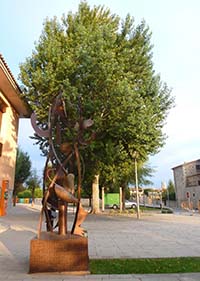 poplar Bordilenc
poplar Bordilenc
The route begins in front of the Bordils Town Hall, where the Chopo Bordilenc presides over the entrance, the most representative tree in the area, from which the municipality received its name. In fact, a third of the municipality is covered with poplars and riverside trees. After taking the obligatory photograph of Bordilenc, we head towards the old quarter of the town through Calle Almeda.
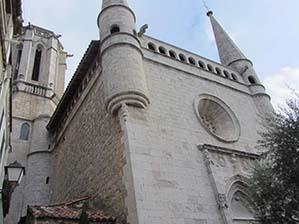 St. Stephen's Church
St. Stephen's Church
At this point, it is worth visiting the Gothic church of San Esteban, built in the second half of the 16th century and very different from most of the romantic churches in the area. Almeda Street connects with Montserrat Street, which then leads to the Torrent de Palagret path. At this crossroads, you will have to continue along the Medinyà path, the narrowest path that heads west, facing Montserrat street.
Once here, you just have to follow the main path that runs through the most agricultural landscape of Bordils, between the fields of crops and the perfectly aligned poplar plantations.
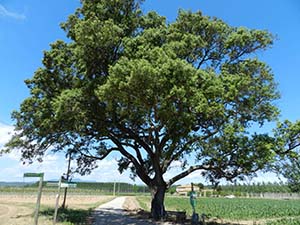 Oak of the Canova
Oak of the Canova
Continuing along this path we come to the reclaiming oak of Canova, a hundred-year-old oak that is at the foot of the path. At this point, you enter the perimeter of the former Republican airfield.
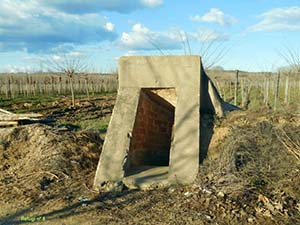 bomb shelters
bomb shelters
Passing in front of the threshing floor of the Can Cuní farmhouse and following the dirt road, a sign indicates the direction of the anti-aircraft shelters. Immediately there is the first small shelter. Follow the path until you find the Vinyals canal, continue upstream, crossing the Aumet bridge and turning right.
Following the ditch you can see another shelter in the middle of a field on the right hand side, more difficult to access.
Once the canal runs parallel to the streets of the Polígono de Celrà, you must cross the Cal Gras bridge where you can see another refuge in the first crop field on the right. Here is a fork where you will take the path to the left following the irrigation. Now it will be necessary to describe a double curve first to the left and then to the right, and follow this path always straight, leaving Can Lirón on the left.
When you find the paved road, it is time to turn right and follow this track that will return to the monumental oak of Canova and Bordils.
During the years of operation of the aerodrome, it became an important military objective, for which it was subjected to a total of ten bombardments that, apart from the material damage, also had a cost in human lives. During the bombardments, the soldiers from the camp took refuge in some of the eight shelters that were built, some of which are still clearly visible today.
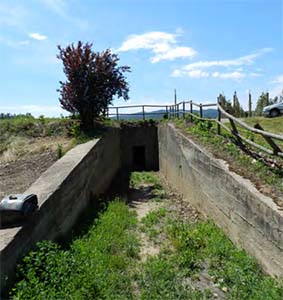 powder
powder
In this last section of the route is the camp's powder keg, a storage space for bombs and ammunition for aviation.
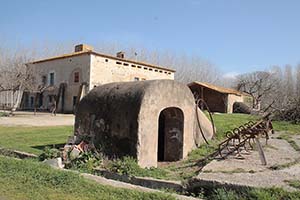 Farmhouse of the Canova
Farmhouse of the Canova
From this point we find another air-raid shelter and finally the Canova farmhouse, which houses the largest shelter in the field in its era. This house was used as a command center and troop accommodation.
Once the Civil War was over, in November 1940 the act of delivery of the land occupied by the airfield to its former owners was signed, and the land returned to agricultural use, which is currently exploited by ornamental tree nurseries.. Likewise, the Canova farmhouse was also returned to its rightful owners.
If you have found the route interesting and want to discover more secrets and curiosities around the airfield, you can visit the Celrà Airfield 1936-1939 Interpretation Centre, located in the Celrà Pagans Factory.
What to do
Castell Gala Dalí Visita Guiada
La Pera (a 6.7 Km)Enter a world of romanticism and surrealism and enjoy a unique cultural…
Castell Palau de la Bisbal d'Empordà
La Bisbal d'Empordà (a 14 Km)The Castell Palau of the Bishops of Girona is an outstanding example…
Where to sleep
Mas Torrencito
Vilademuls (a 13.7 Km)Mas Torrencito is a cozy establishment set in a 15th-century country house…
Allotjament Rural Casa Bàscara
Bàscara (a 12.9 Km)Disconnect and enjoy the tranquility and serenity offered by the Casa Bàscara…
Can Xargay
Porqueres (a 12.1 Km)Can Xargay is a charming, ancient Catalan farmhouse from the 11th century,…


